
The need to change the file extension occurs in the event that initially or when saving it was mistakenly assigned to the incorrect name of the format. In addition, there are cases when elements with different extensions, in essence, have the same type of format (for example, RAR and CBR). And in order to open them in a specific program, you can simply change it. Consider how to perform the specified task in Windows 7.
Change procedure
It is important to understand that simply changing the extension does not change the type or file structure. For example, if in the document to change the FileName Extension with Doc on XLS, then it will automatically become an exela table. To do this, it is necessary to carry out the conversion procedure. We will consider various ways to change the name of the format in this article. This can be done, both using the built-in Windows tools and applying third-party software.Method 1: Total Commander
First of all, consider an example of changing the name of the object format using third-party applications. With this task, almost any file manager can cope with this. The most popular of them is definitely Total Commander.
- Run Total Commander. Go, using the navigation tools, to the directory where the item is located, the name of which must be changed. Click on it right mouse button (PCM). In the list, choose "Rename". You can also press the F2 key after the selection.
- After that, the field with the name becomes active and accessible to change.
- We change the extension of the element, which is indicated at the end of his name after the point on the one that we consider it necessary.
- It is necessary for the adjustment to take effect, enter Enter. Now the name of the object format is changed, which can be seen in the "Type" field.
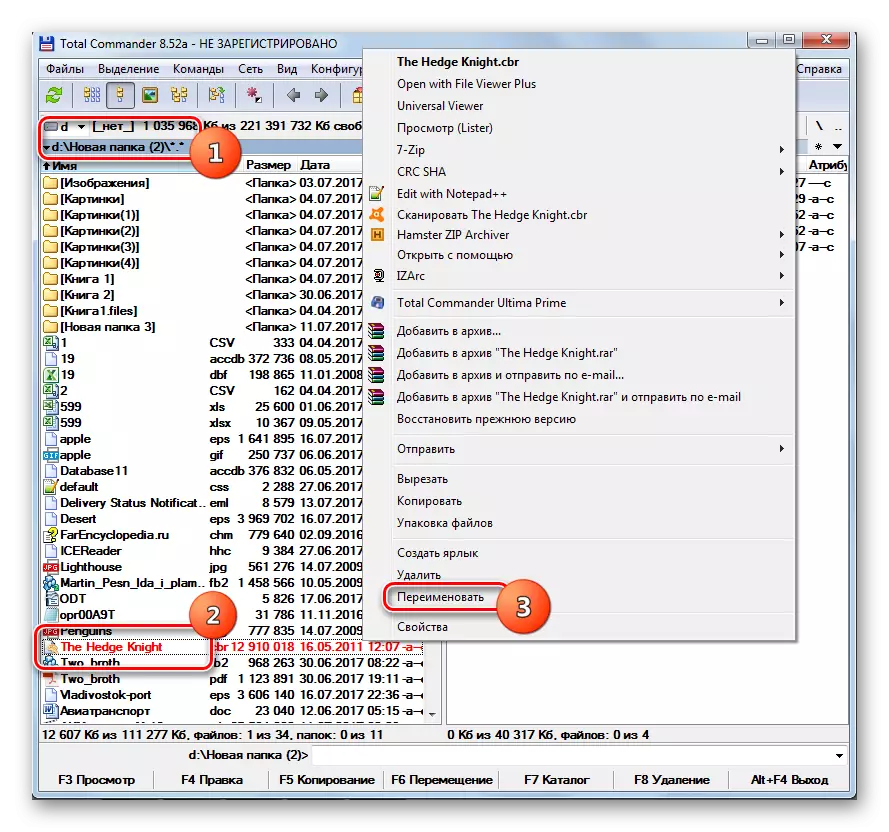
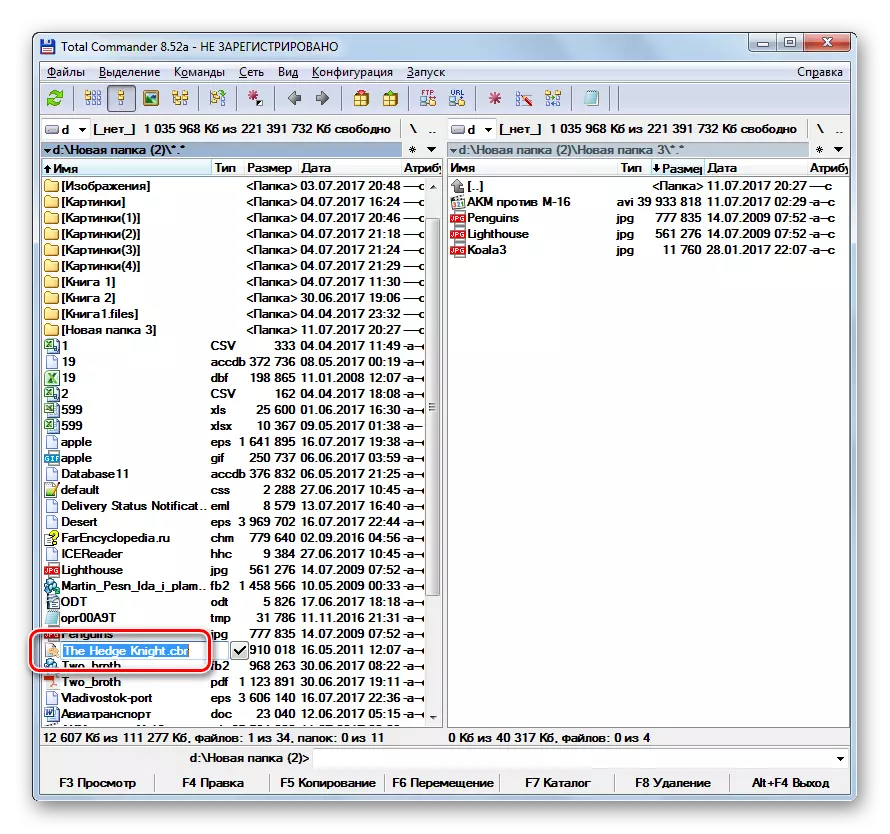
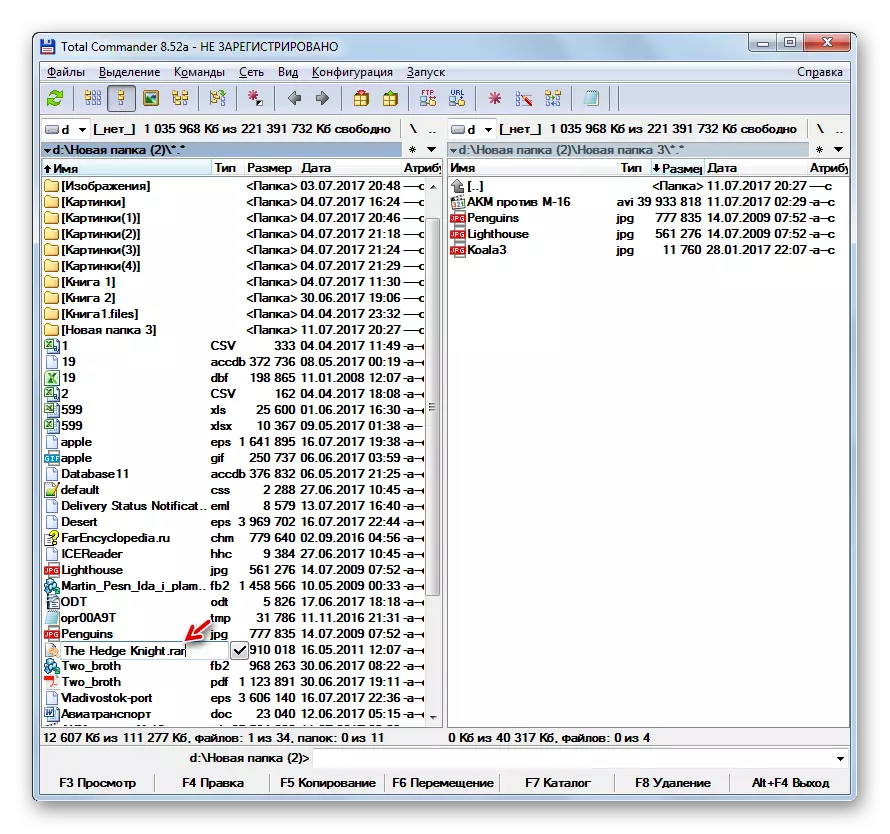
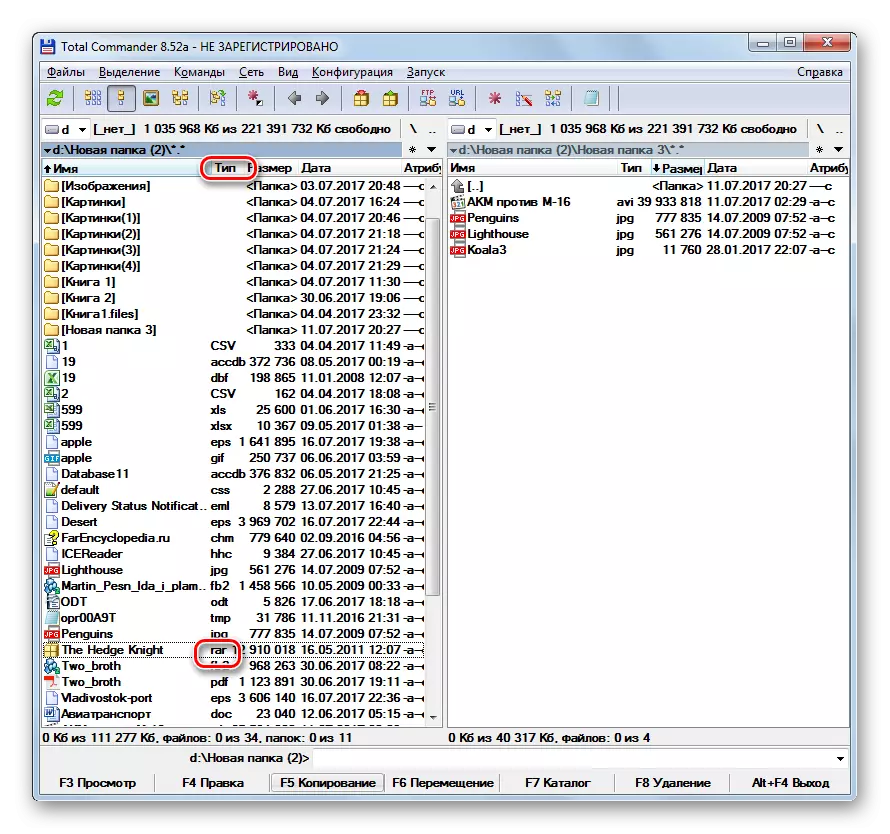
Using Total Commander, you can perform group renaming.
- First of all, you should select those elements that you want to rename. If you need to rename all files in this directory, we become on any of them and apply a Ctrl + A combination or Ctrl + Num +. Also, you can go to the menu on "Select" and select "Allocate everything" in the list.
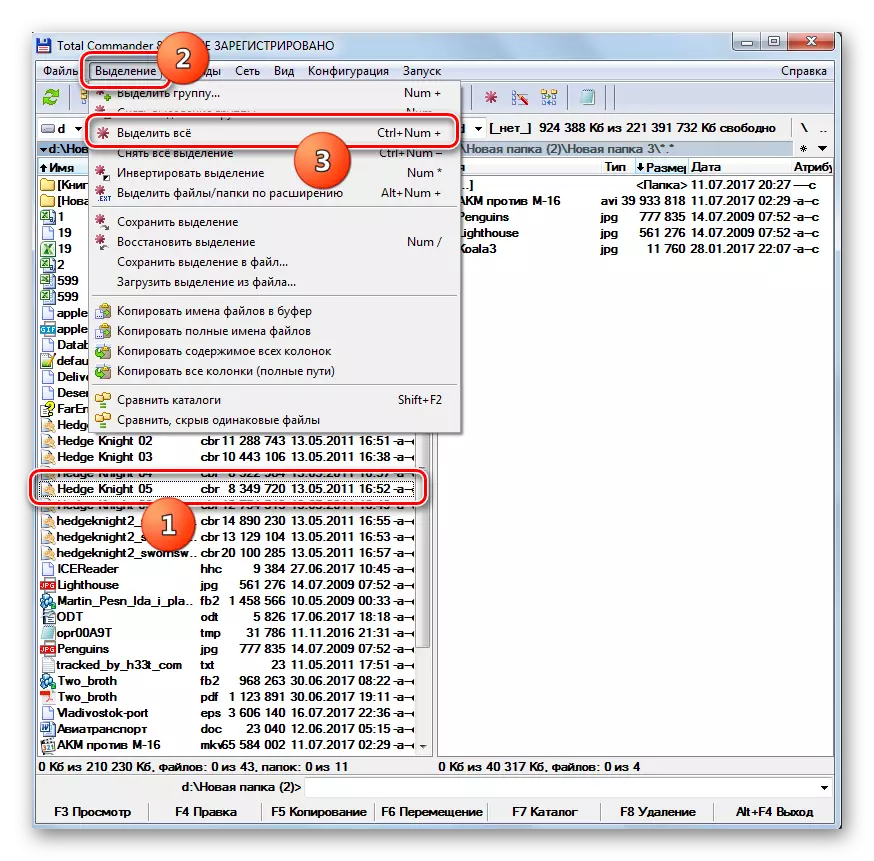
If you want to change the name of the type of files from all objects with a specific extension in this folder, then in this case, after selecting the item, you sequentially go to the "Select" menu and "highlight files / folders to extension" menu or apply Alt + Num +.
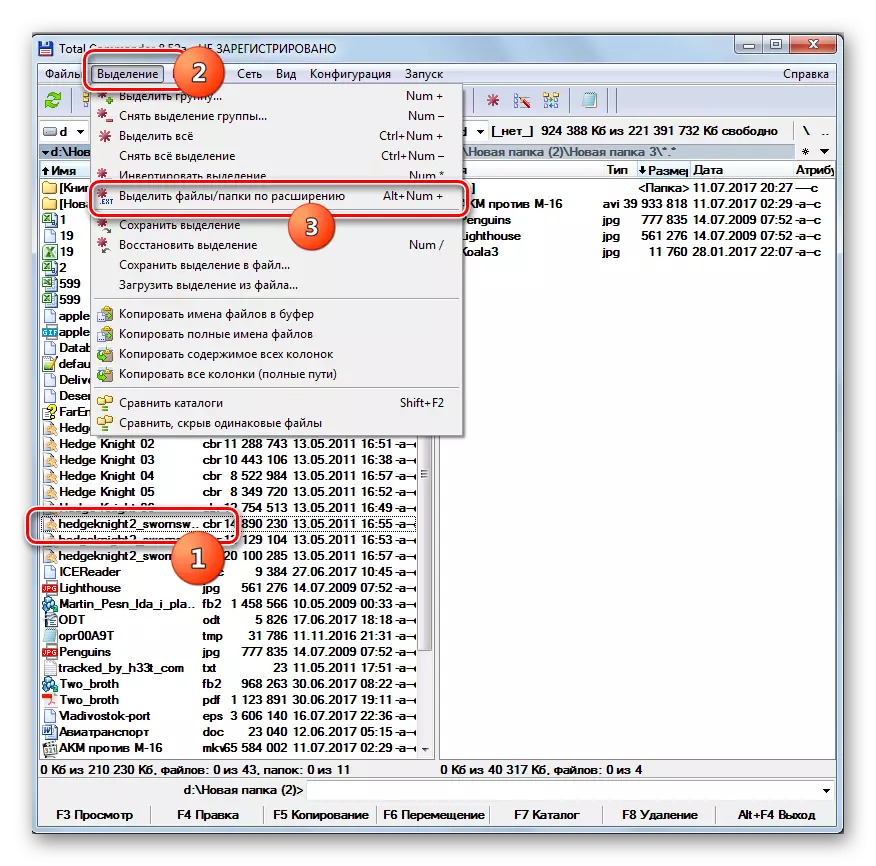
If you need to rename only part of files with a specific extension, then in this case, in the first, sort the contents of the directory by type. So it will be more convenient to search for the necessary objects. To do this, click the Type field name. Then, by holding the Ctrl key, click the left button (LKM) to the names of the items that need to change the extension.
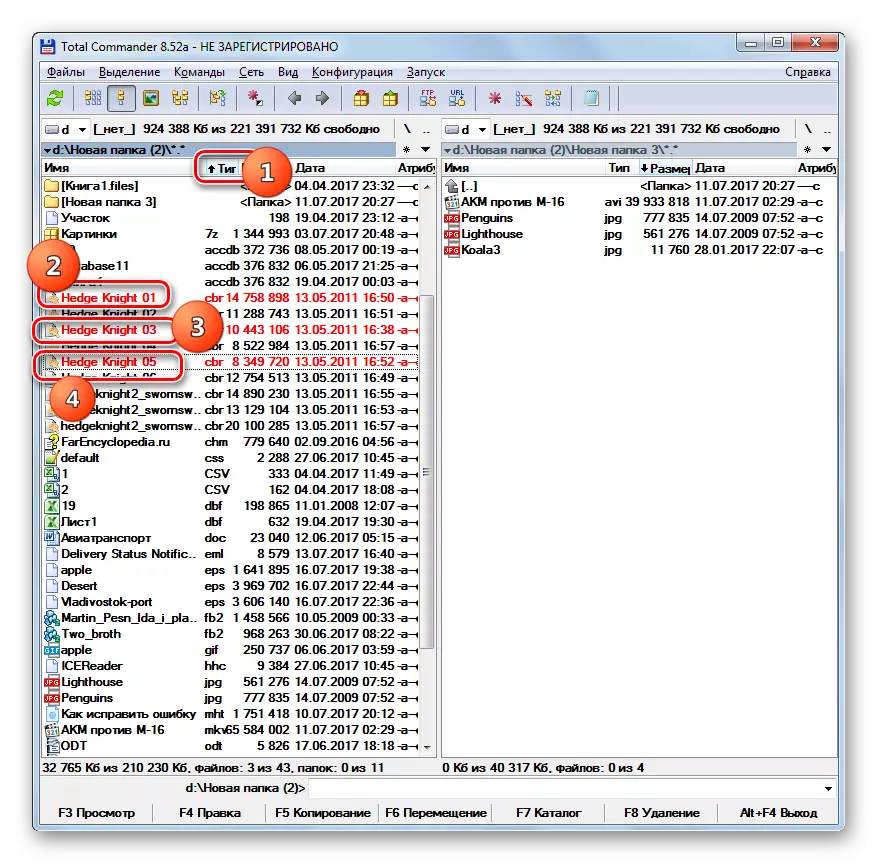
If objects are located in order, then click the LKM on the first of them, and then climbing SHIFT, last. This will allocate the entire group of elements between these two objects.
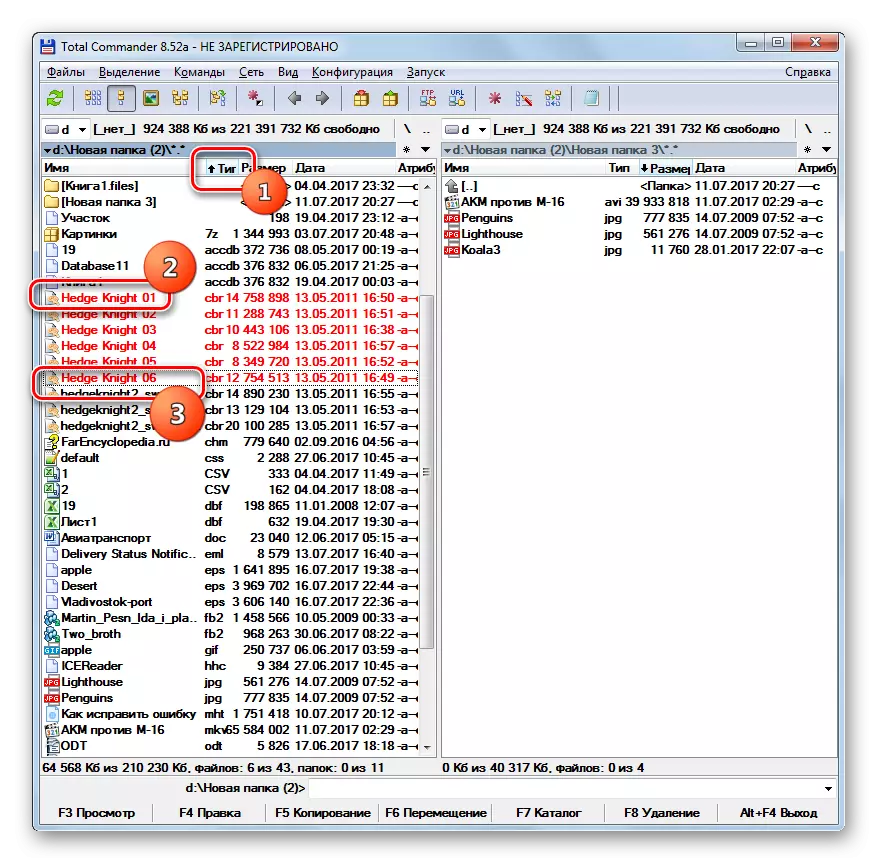
Whatever the selection option you selected, the selected objects will be labeled in red.
- After that, you need to call a group rename tool. It can also be made in several ways. You can click on the "Group Rename" icon on the toolbar or apply Ctrl + M (for English-speaking versions Ctrl + T).

Also, the user can click "File", and then select "Group Rename" from the list.
- The "Group Rename" tool window is launched.
- In the "Extension" field, simply enter the name you want to see from selected objects. In the "New Name" field at the bottom of the window, options for the names of the elements in the renamed form will be displayed. To apply change to the specified files, click "Run".
- After that, you can close the name of the name of the name. Through the Total Commander interface in the "Type" field, you can see that those elements that were previously allocated, the extension was changed to the user specified.
- If you find out that when renaming it was made a mistake or for some other reason they wished to cancel it, then it is also quite easy to do this. First of all, select the files with the changed name to any of those methods that were discussed above. After that, move to the "Group Rename" window. In it, click "Rollote".
- The window will start, in which it is asked if the user really wants to cancel. Click "yes."
- As you can see, the rollback was successful.
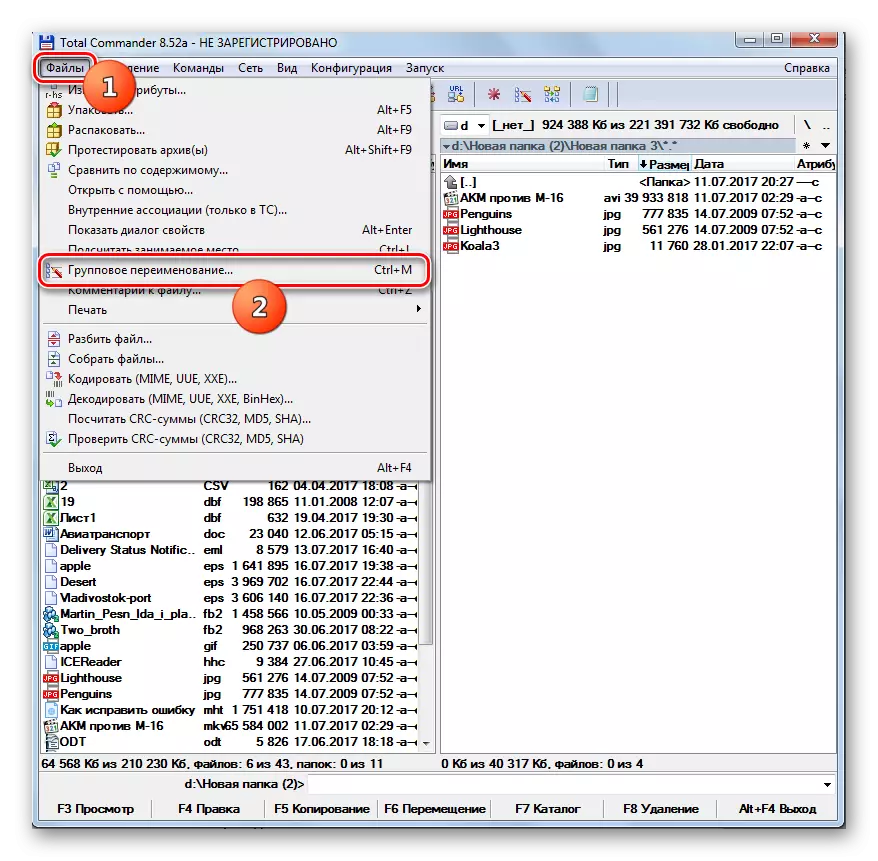
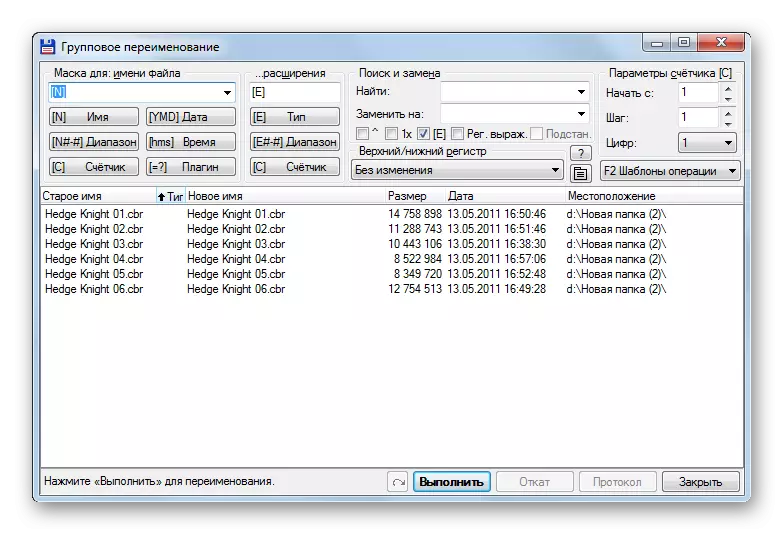
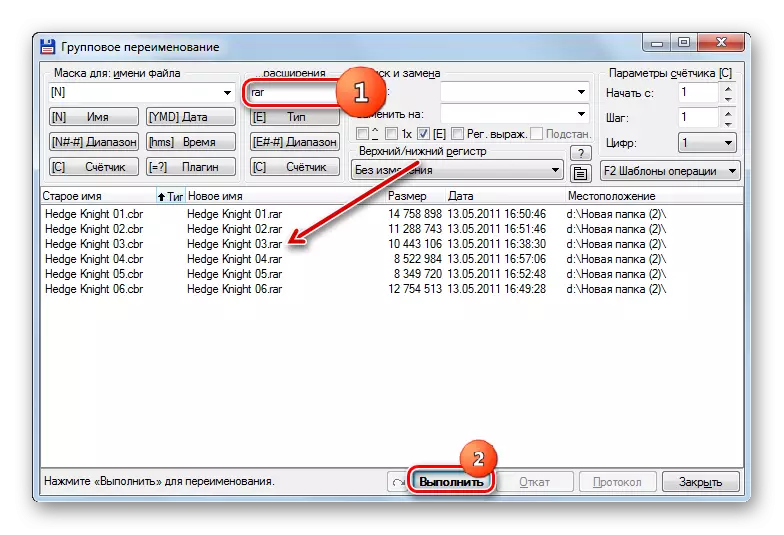

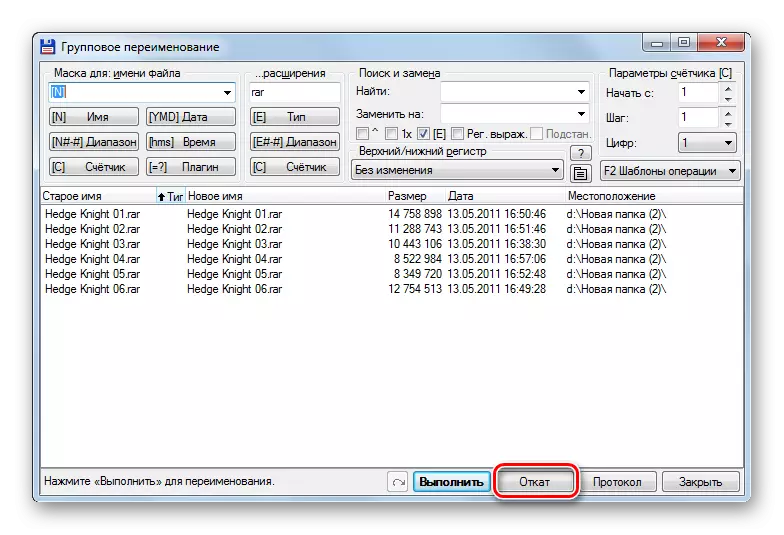
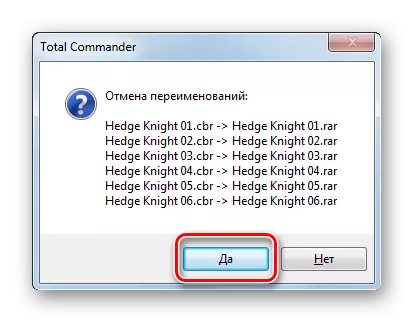

Lesson: How to use Total Commander
Method 2: Bulk Rename Utility
In addition, there are special programs intended for mass rename objects operating, including in Windows 7. One of the most famous such software products is Bulk Rename Utility.
Download Bulk Rename Utility
- Run Bulk Rename Utility. Through the internal file manager, located in the upper left part of the application interface, go to the folder where objects are required to perform operation.
- At the top in the central window, a list of files that are located in this folder will appear. Using the same methods of manipulating the hot keys that were previously used in Total Commander, make the allocation of target objects.
- Next, go to the "Extension (11) settings block that is responsible for changing the extensions. In an empty field, enter the name of the format you want to see from the selected group of items. Then press "RENAME".
- A window opens in which the number of renamed objects is specified, and is asked if you really want to perform this procedure. To confirm the task, click "OK".
- After that, an informational message is displayed that the task is completed successfully and the specified number of elements was renamed. You can harrow in this window "OK".
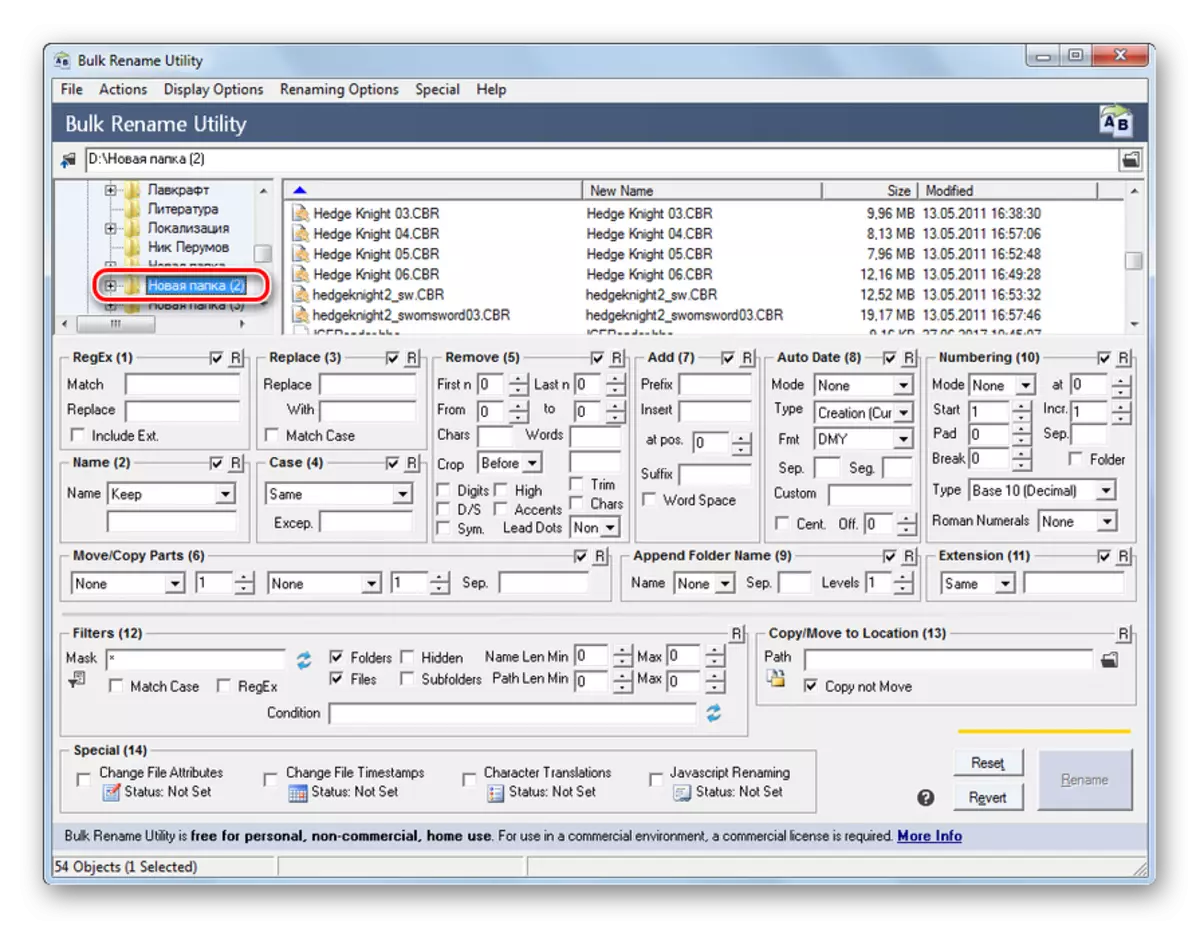

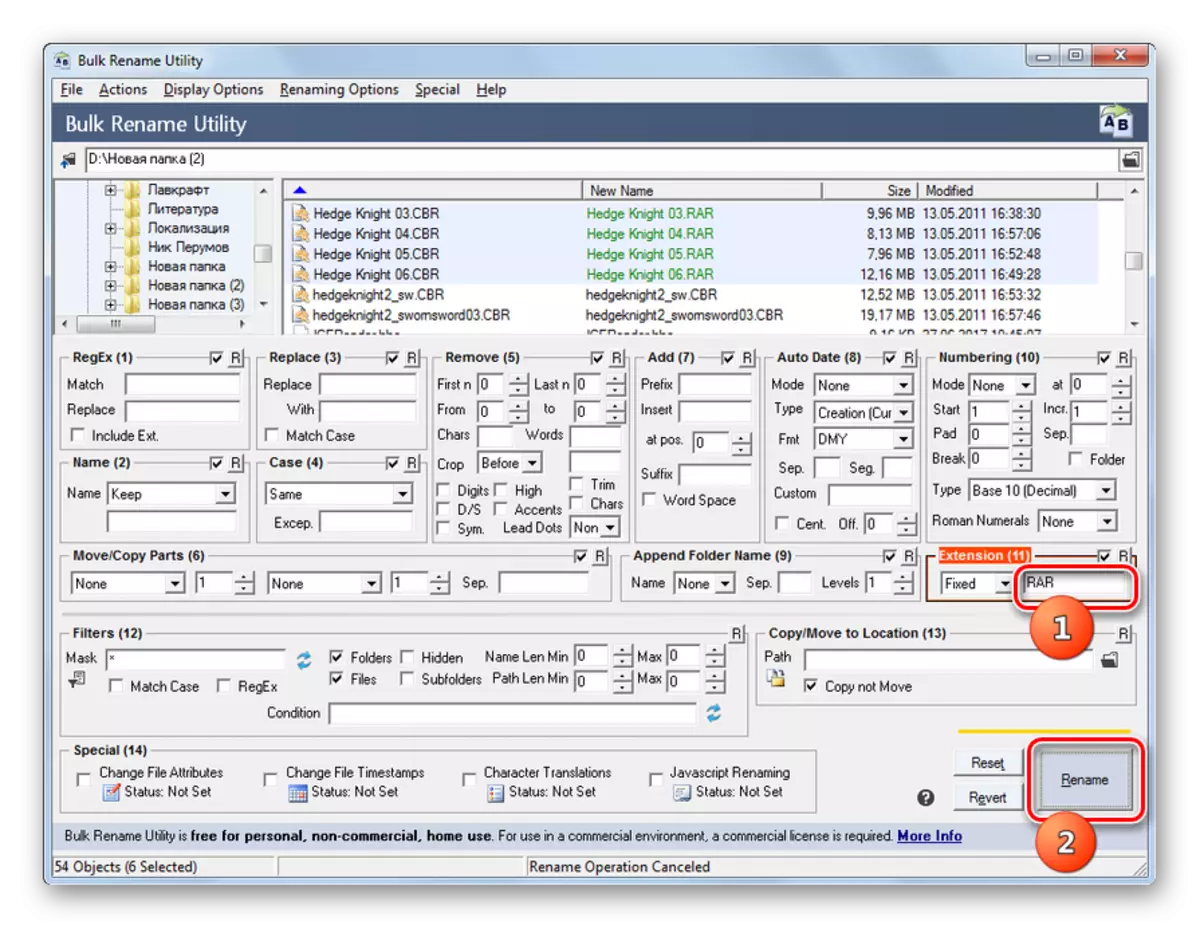
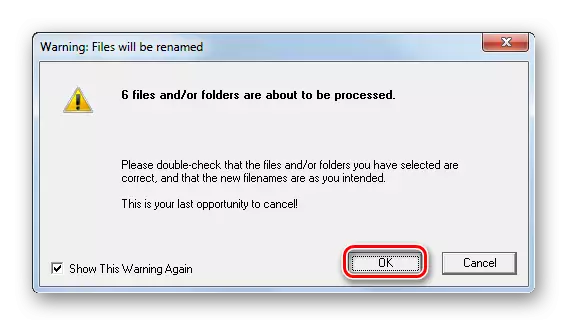
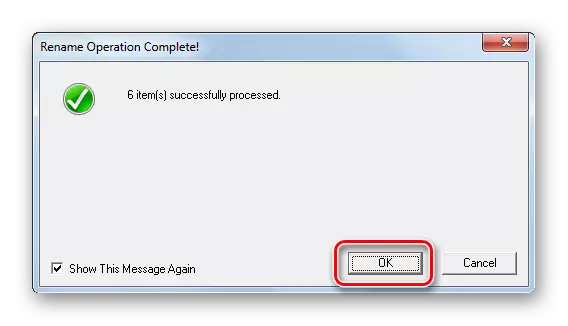
The main disadvantage of this method is that the Bulk Rename Utility application is not Russified, which creates certain inconvenience to the Russian-speaking user.
Method 3: Using the "Explorer"
The most popular way to change the FileName Extension is to use the "Windows Explorer". But the difficulty is that in Windows 7, the default expansion in the "conductor" is hidden. Therefore, first of all, you need to activate their display by clicking on "folder parameters".
- Go to "Explorer" to any folder. Click "Arrange". Next, select "Folder and Search options" list.
- The folder parameters window opens. Move to the section "View". Remove the checkbox from the "Hide Extensions" item. Press "Apply" and "OK".
- Now the names of the formats in the "Explorer" will be displayed.
- Then go to the "Explorer" to the object, the name of the format in which you want to change. Click on the PCM. Select "Rename" in the menu.
- If you do not want to call the menu, then after selecting an item, you can simply press the F2 key.
- The file name becomes active and accessible to change. We change the last three or four letters after the point in the name of the object on the name of the format that you want to apply. The rest of his name is not needed without any particular need. After performing this manipulation, press ENTER.
- A miniature window opens, which reports that after changing the expansion, the object can be inaccessible. If the user consciously performs actions, then it must confirm them by clicking "Yes" after the question "Perform a change?".
- Thus, the name of the format was changed.
- Now, if there is such a need, the user can move again to the folder parameters and remove the expansion shows in the "Explorer" in the section "View" by setting the check box near the "Hide Extensions" item. Now you should click "Apply" and "OK".
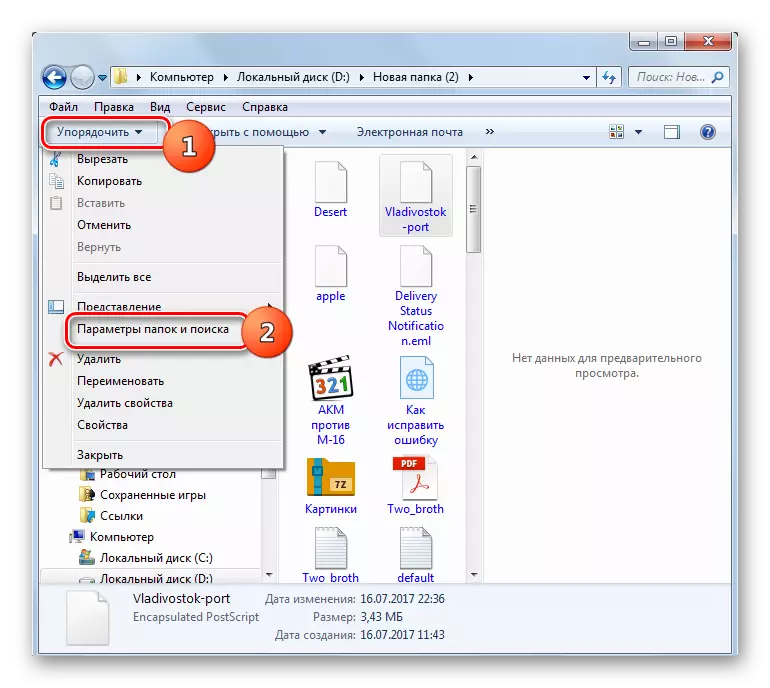
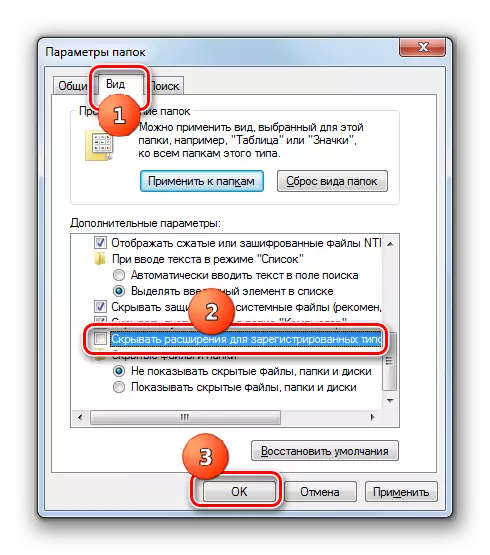
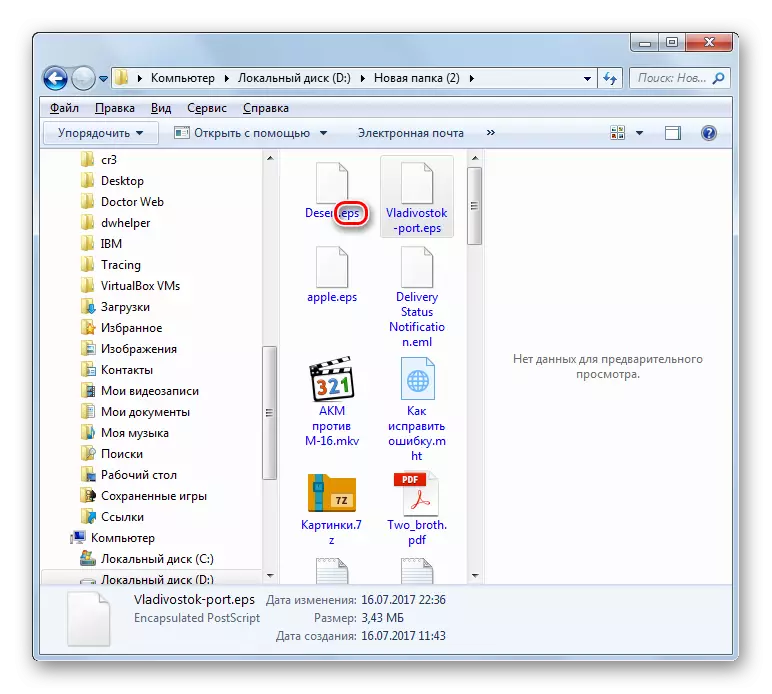

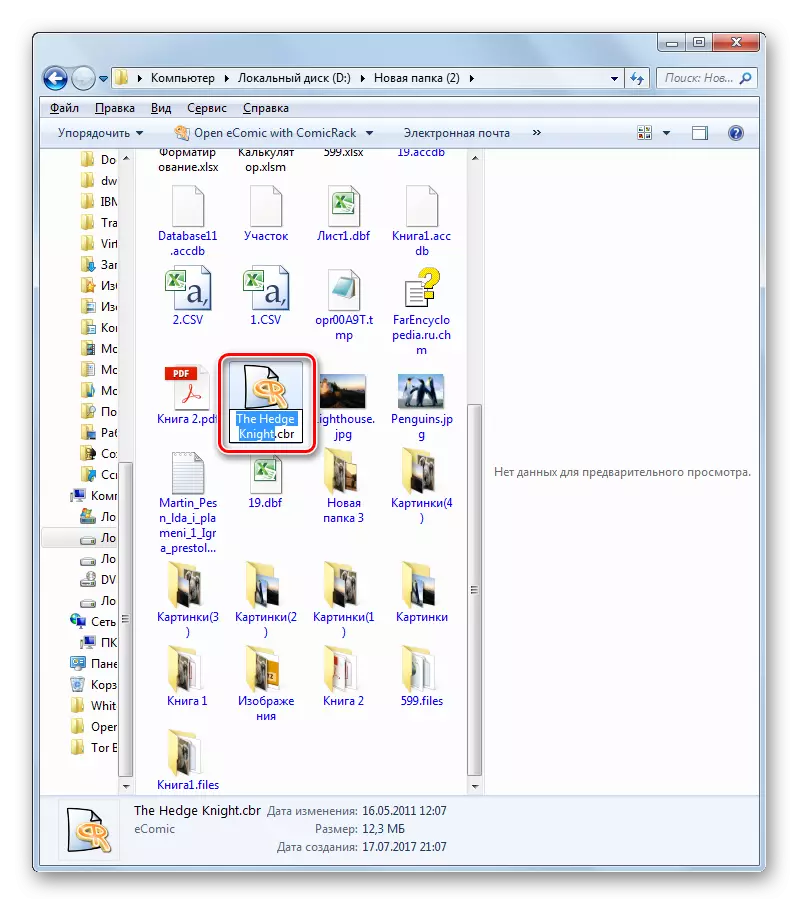
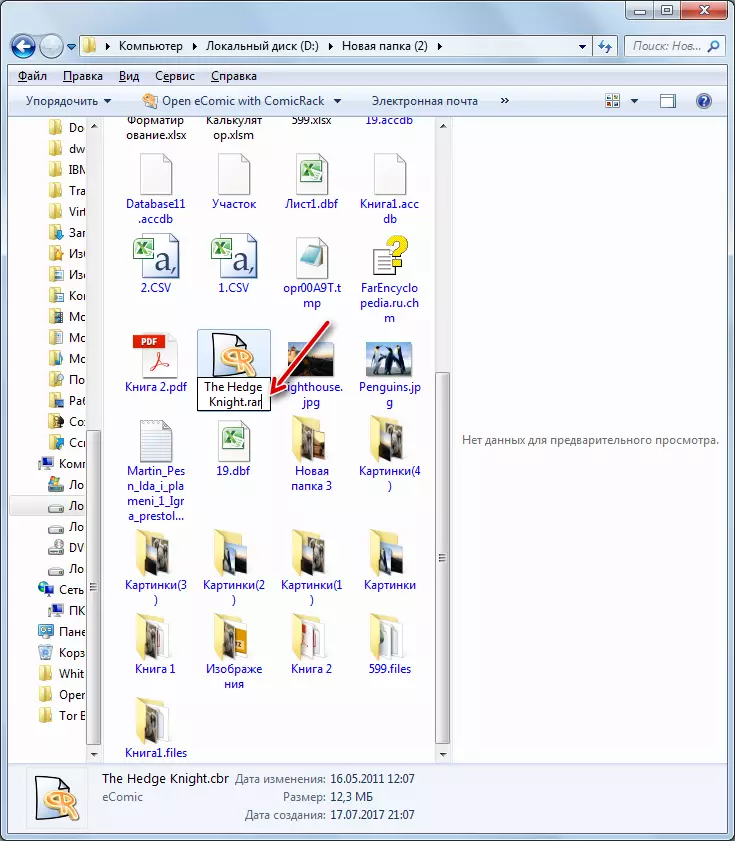
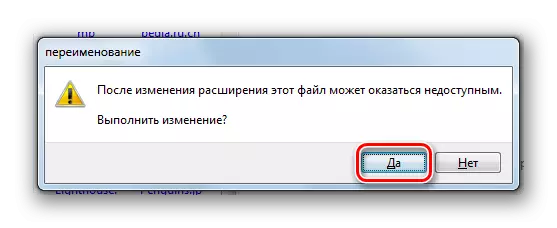
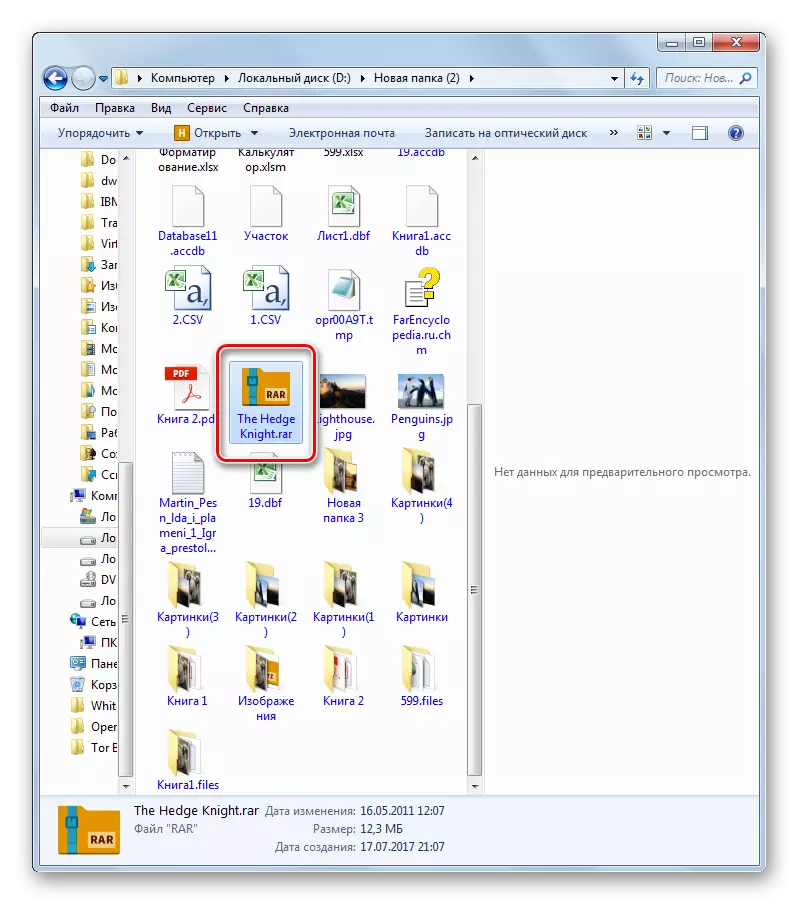
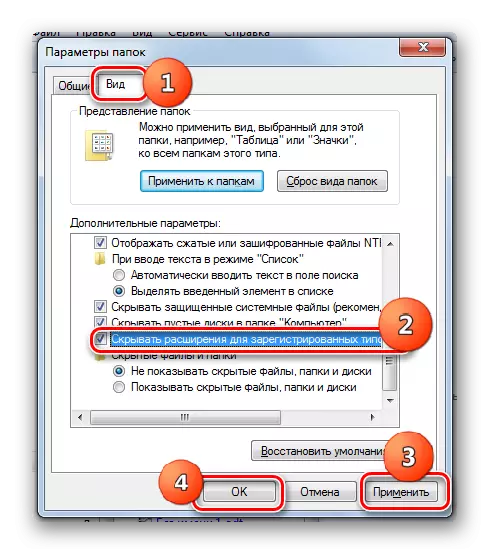
Lesson: How to go to "Folder Properties" in Windows 7
Method 4: "Command String"
You can also change the FileName Extension using the command line interface.
- Go to the directory that contains a folder where the item is designed to rename. Pressing the SHIFT key, click PCM on this folder. In the list, select "Open commands window".
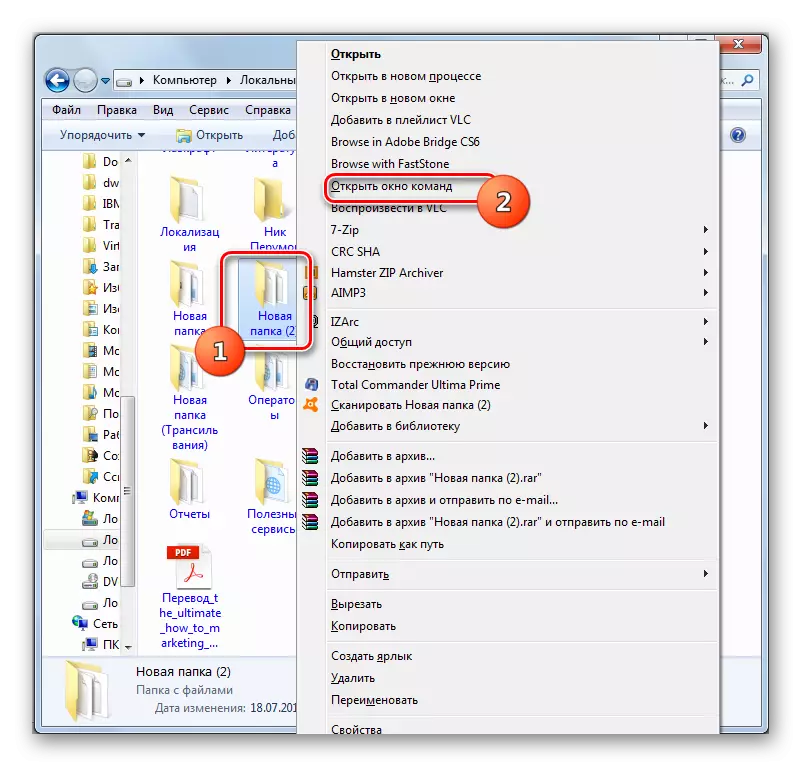
You can also go inside the folder itself, where the necessary files are located, and with the shift shod, click PKM on any empty place. In the context menu, also select "Open commands window".
- When using any of these options, the "Command Line" window will start. It will already display the path to the folder where the files are located in which the format must be renamed. Enter the command on the following template there:
Ren old_IFE_Fyle new_Imi_File
Naturally, the file name is required to indicate the extension. In addition, it is important to know that if there are gaps in the name, it is necessary to take it in quotes, and otherwise the team will be perceived by the system as incorrect.
For example, if we want to change the name of the element format named "HEDGE KNIGHT 01" with CBR to RAR, the command should look like:
REN "HEDGE KNIGHT 01.CBR" "HEDGE KNIGHT 01.RAR"
After entering the expression, press ENTER.
- If the extension show is enabled in the "Explorer", then you can see that the name of the format of the specified object has been changed.

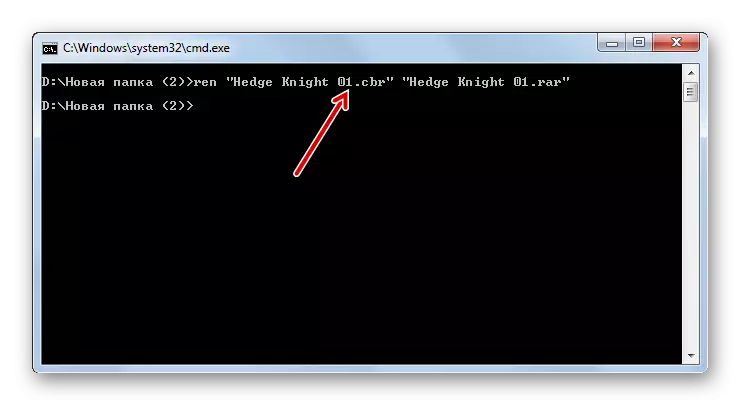
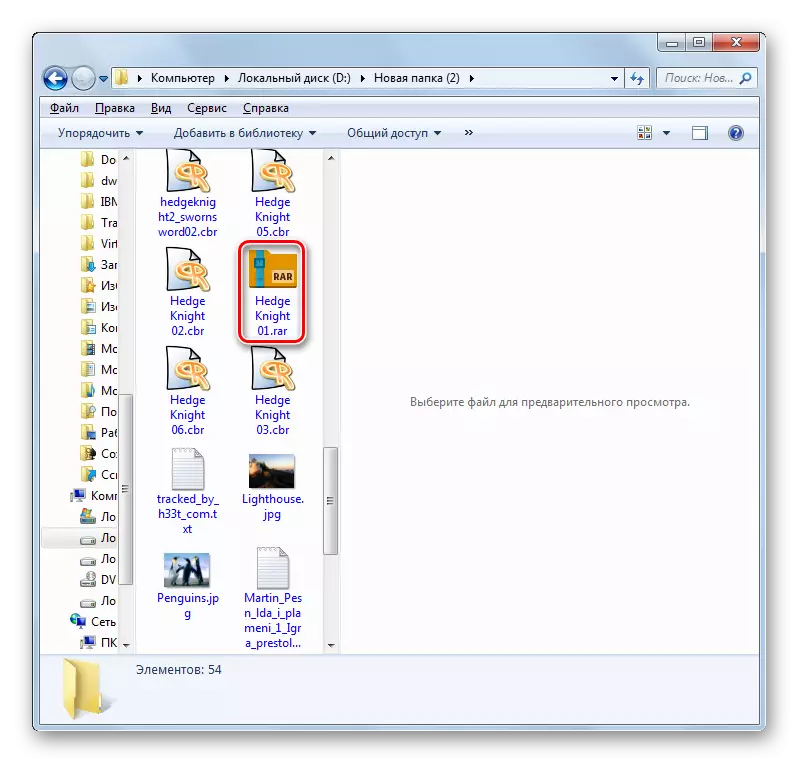
But, of course, apply the "command line" to change FileName Extension, only one file is not rational. It is much easier to produce this procedure through the "Explorer". Another thing, if you need to change the name of the format among the whole group of elements. In this case, renaming through the "Explorer" will take a long time, since this tool does not provide for the operation at the same time with the whole group, but the "command line" is suitable for solving this task.
- Run the "command line" for the folder where it is necessary to rename objects any of those two ways that the conversation was higher. If you want to rename all files with a specific extension in this folder, replacing the name of the format to another, then in this case, use the following template:
REN *. Supply_Simit * .New_Sew
An asterisk in this case denotes any set of characters. For example, in order to change in the folder all the names of the formats with CBR on RAR, you should enter such an expression:
Ren * .cbr * .rar
Then press ENTER.
- Now you can check the result of processing through any file manager supporting the display of file formats. Rename will be executed.

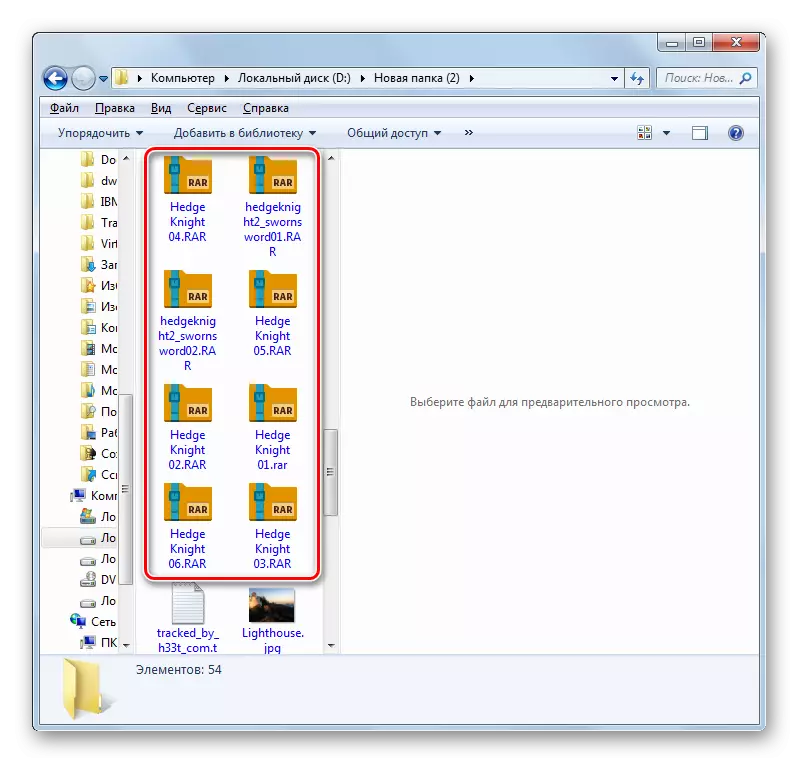
Using the "command line", you can solve more complex tasks when changing the expansion of elements posted in one folder. For example, if you need to rename not all files with a specific extension, but only those that have a certain number of characters in their name, can I use instead of each symbol sign "?". That is, if the "*" sign indicates any number of characters, then the sign "?" It implies only one of them.
- Call the "Command Line" window for a specific folder. In order for, for example, to change the names of formats with CBR to RAR only in those elements in whose behalf 15 characters, enter the following expression to the "Command Line" area:
Ren ???????????????. CBR ??????????????? Rar
Press ENTER.
- As you can see through the "Explorer" window, the change in the name of the format has affected only those elements that have fallen under the requirements described above.
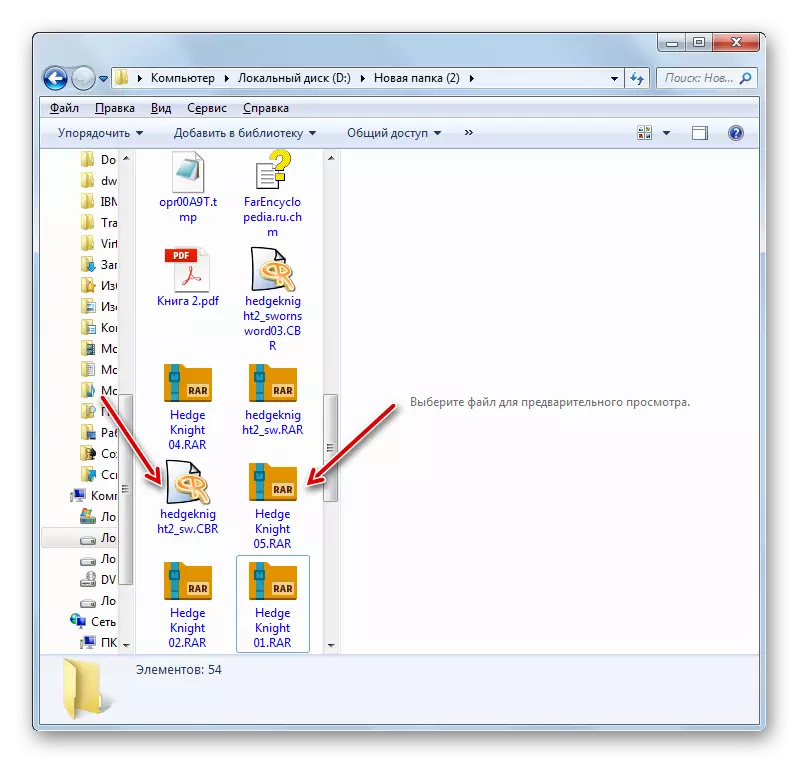
Thus, manipulating signs "*" and "?" It is possible through the "command line" to put various combinations of tasks for group change of extensions.
Lesson: How to enable "Command Line" in Windows 7
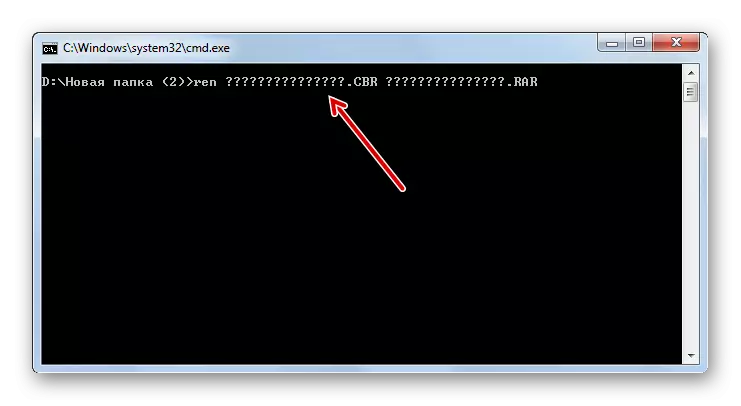
As you can see, there are several options for changing extensions in Windows 7. Of course, if you want to rename one or two objects, it is easiest to do this through the "Explorer" interface. But, if many files are required to change the format names immediately, in this case, in order to save forces and time, this procedure will have to either install third-party software, or use the opportunities that the "command line" interface is available.
